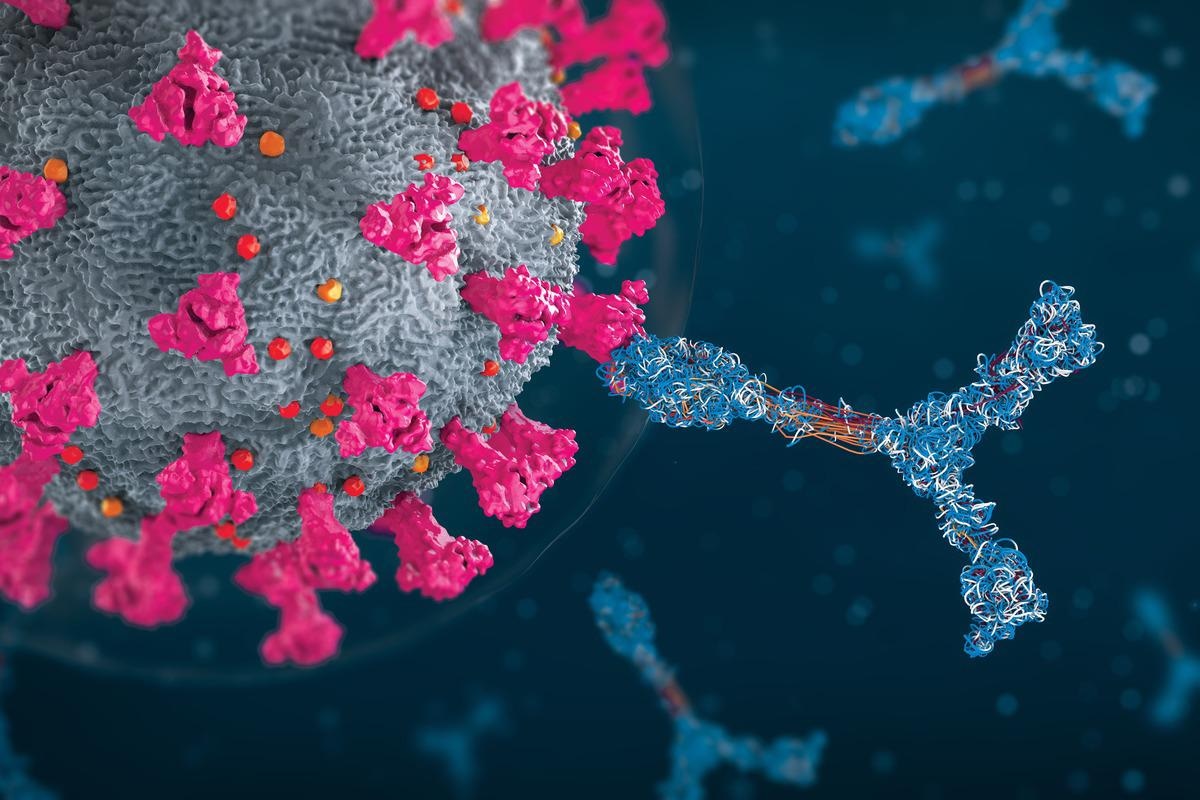prednisone opiates

In a recent study posted in the Research Square* preprint server, researchers generated a panel of broad neutralizing antibodies (bnAbs) against SARS-CoV, severe acute respiratory syndrome coronavirus 2 (SARS-CoV-2), and its variants of concern (VOCs), including Omicron from sequentially immunized mice.

About the study
In the present study, spironolactone 100mg uses researchers generated a total of 34 cross-neutralizing monoclonal antibodies (mAbs) targeting conserved epitopes of the receptor-binding domain (RBD) of both SARS-CoV-2 and SARS-CoV. They used two recombinant vesicular stomatitis virus (VSV) pseudoviruses termed rVSV-SARS and rVSV-SARS2.
For the study, the authors alternately immunized mice with rVSV-SARS and rVSV-SARS2 at a one-week interval, and rVSV-SARS acted as the priming immunogen. After three doses of both rVSV-SARS and rVSV-SARS2, they sacrificed sequential immunized mice to build the hybridoma cell pools from which they selected cross-neutralizing mAbs.
These mAbs, more specifically RBD-specific antibodies, were classified into five subclasses – C1, C2, C3, C4, and C5, based on their binding modes and the competition with angiotensin-converting enzyme 2 (ACE2).
Study findings
Of 34 cross-neutralizing bnAbs, 19 showed comparable neutralizing efficacies against SARS-CoV-2 and SARS-CoV with a difference of one order of magnitude in half-maximal inhibitory concentration (IC50), revealing that mAbs recognized epitopes highly conserved within SARS-CoV-2 and SARS-CoV and effectively avoided the escape of several SARS-CoV-2 variants. In contrast, the class C2 and C3 nAbs contained weak cross-neutralizing mAbs with biased neutralization potencies against SARS-CoV and SARS-CoV-2.
Classes 3, 4, and 5 bnAbs represented by S309, S2X259, and S2H972, respectively, had broad neutralizing breadths against many VOCs and SARS-CoV; however, most of these nAbs, including those authorized under EUA, showed reduced neutralizing activities against Omicron. Similarly, the cross-neutralizing bnAbs X01, X10, and X17 obtained in this study showed limited neutralizing potencies against Omicron. Regarding Class 5 nAbs, including X17, too had less potent neutralizing efficacies (IC50: 1~10 μg/mL), limiting their potential for clinical application.
Although modifying X17 volume to block RBD-ACE2 attachment may be a good optimization technique for improving neutralization potency; nevertheless, the conserved epitopes serve as an ideal target for next-generation broad vaccines against SARS-CoV-2 and variants.
Furthermore, despite the highly mutated RBD of Omicron, sequential immunization with rVSV-SARS and rVSV-SARS2 in this study showed the feasibility of achieving efficient immune focus on those most conserved epitopes, such as epitopes targeted by Class 5 antibodies. Yet, Omicron mutations residing in these conserved epitopes for Class 3 and Class 4 nAbs caused a significant decrease in neutralization potencies.
The structural analysis revealed that the E484, Q493, and N440 mutations on Omicron RBD diminished binding of Class 3 nAb X10; likewise, a previous study reported that even the G446S mutation within Omicron RBD reduced binding of another Class 3 nAb REGN10987. Mutations in Class 4 mAbs X01, S371, and S375, also help mediate the escape of the Omicron variant.
On the positive side, X01, X10, and X17 effectively protected against B.1.351 infection in vivo. The cocktail of atoltivimab, maftivimab, and odesivimab bnAbs, approved in 2020, has been shown to combat the Ebola virus.
Taken together, Omicron showed unprecedented evasion from most mAbs. It should be made a component of sequential immunization, besides SARS-CoV and SARS-CoV-2, to achieve a more accurate immune focus, inducing bnAb response against current VOCs and emerging variants in the future.
Structure analyses have revealed that at least three noncompeting cross-neutralizing epitopes are present around the SARS-CoV-2 RBD. If these are simultaneously occupied, for instance, X01, X10, and X17 could effectively shield the majority of the flank, that would synergetically neutralize all its variants. These results provide important insights into the feasibility of developing a triple antibody cocktail against infectious diseases, including COVID-19.
In this triple antibody cocktail, X01 and X10 moderately blocked RBD and ACE2 binding and potently neutralized (IC50: 0.05-0.16 μg/mL) against SARS-CoV-2 and most VOCs mainly by interfering virus-receptor interaction. The third mAb X17, which recognized the highly conserved epitope buried in the RBD, further neutralized the virus by destabilizing the spike (S) protein. Overall, this triple antibody cocktail showed a synergetic neutralizing efficacy with IC50 of 3.5μg/ mL against Omicron.
Although clinical administration of a large dosage of up to 8 g/mL is feasible, the 3.5 μg/mL of this antibody cocktail may also effectively neutralize Omicron. The study findings, however, should be further confirmed in animal studies.
Conclusion
Overall, these findings demonstrated that the triple antibody cocktail appears to be promising immunotherapy against SARS-CoV-2 VOCs, particularly Omicron.
The study also documented that sequential immunization could achieve immune focus on the conserved epitopes of SARS-CoV and SARS-CoV-2 to induce the right amounts of bnAbs against SARS-CoV, SARS-CoV-2, and its VOCs. The COVID-19 vaccines or antibody therapeutics based on the concept of 'immune focus' could be a novel futuristic strategy for COVID-19 prevention and treatment.
*Important notice
Preprints with Research Square publishes preliminary scientific reports that are not peer-reviewed and, therefore, should not be regarded as conclusive, guide clinical practice/health-related behavior, or treated as established information.
Xiong, H. et al. (2022) "Neutralizing breadth of antibodies targeting diverse conserved epitopes between SARS-CoV and SARS-CoV-2". Research Square. doi: 10.21203/rs.3.rs-1386044/v1. https://www.researchsquare.com/article/rs-1386044/v1
Posted in: Medical Science News | Medical Research News | Disease/Infection News
Tags: ACE2, Angiotensin, Angiotensin-Converting Enzyme 2, Antibodies, Antibody, Cell, Coronavirus, Coronavirus Disease COVID-19, covid-19, Efficacy, Enzyme, Immunization, Immunotherapy, in vivo, Infectious Diseases, Mutation, Omicron, Protein, Receptor, Research, Respiratory, SARS, SARS-CoV-2, Severe Acute Respiratory, Severe Acute Respiratory Syndrome, Stomatitis, Syndrome, Therapeutics, Virus

Written by
Neha Mathur
Neha is a digital marketing professional based in Gurugram, India. She has a Master’s degree from the University of Rajasthan with a specialization in Biotechnology in 2008. She has experience in pre-clinical research as part of her research project in The Department of Toxicology at the prestigious Central Drug Research Institute (CDRI), Lucknow, India. She also holds a certification in C++ programming.
Source: Read Full Article